Craft CTM Ultra Carbon
Test Locations: Logan, Utah
Test Duration (so far): 83 miles
Stated Stack Height: 40 mm (heel) / 30 mm (forefoot)
Stated Heel-to-Toe Drop: 10 mm
Stated Features:
- One-piece engineered mesh upper
- Vault Foam midsole bottom layer: Lightweight, high-rebound, and durable
- Vault Foam midsole insert: ultra-light, ultra-high rebound
- 3-piece lugged traction rubber outsole capable on road or moderate trail surfaces and in varying climate conditions
- Tuned carbon fiber plate with precision split for torsion and variable energy return
Reviewer: 6’1″, 145 lbs / 185 cm, 66 kg
Size Tested: US Men’s 11.5
Stated Weight per Shoe (US Men’s Size 8.5): 260 g / 9.2 oz
Blister Measured Weight (US Men’s 11.5):
- Shoes + Laces: 278 g (left) & 287 g (right)
- Insoles: 41 g (left) & 42 g (right)
- Total: 319 g (left) & 329 g (right)
MSRP: $249.99
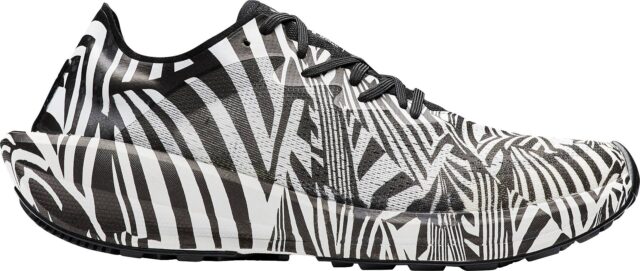
Intro
I’ve recently been running in (and really enjoying) quite a few high-stack shoes with various fancy midsole technologies aimed at improving energy return and efficiency. And I must admit, I’ve been pretty impressed by how good shoes with carbon plates and / or unique midsole foams feel out on the road / trail. Still, I wasn’t sure how well I’d get along with the Craft CTM Ultra Carbon, for a few different reasons.
First and foremost, the CTM Ultra Carbon’s 40 mm / 30 mm stack height and 10 mm drop are both quite a bit higher than I’m used to. I had also never run in Craft shoes before — I’ve always associated Craft more with performance apparel than with running shoes, so I was curious to see how well the brand could transfer their technical know-how from apparel to shoes.
Still, the CTM Ultra Carbon is definitely intriguing on paper. Craft calls it a “new standard in ultra-distance running,” and it’s got more of an outsole than shoes like the Hoka One One Carbon X2 — so at least at first glance, it seemed like the CTM Ultra Carbon had the potential to be a solid shoe for long runs and races on roads and non-technical trails.
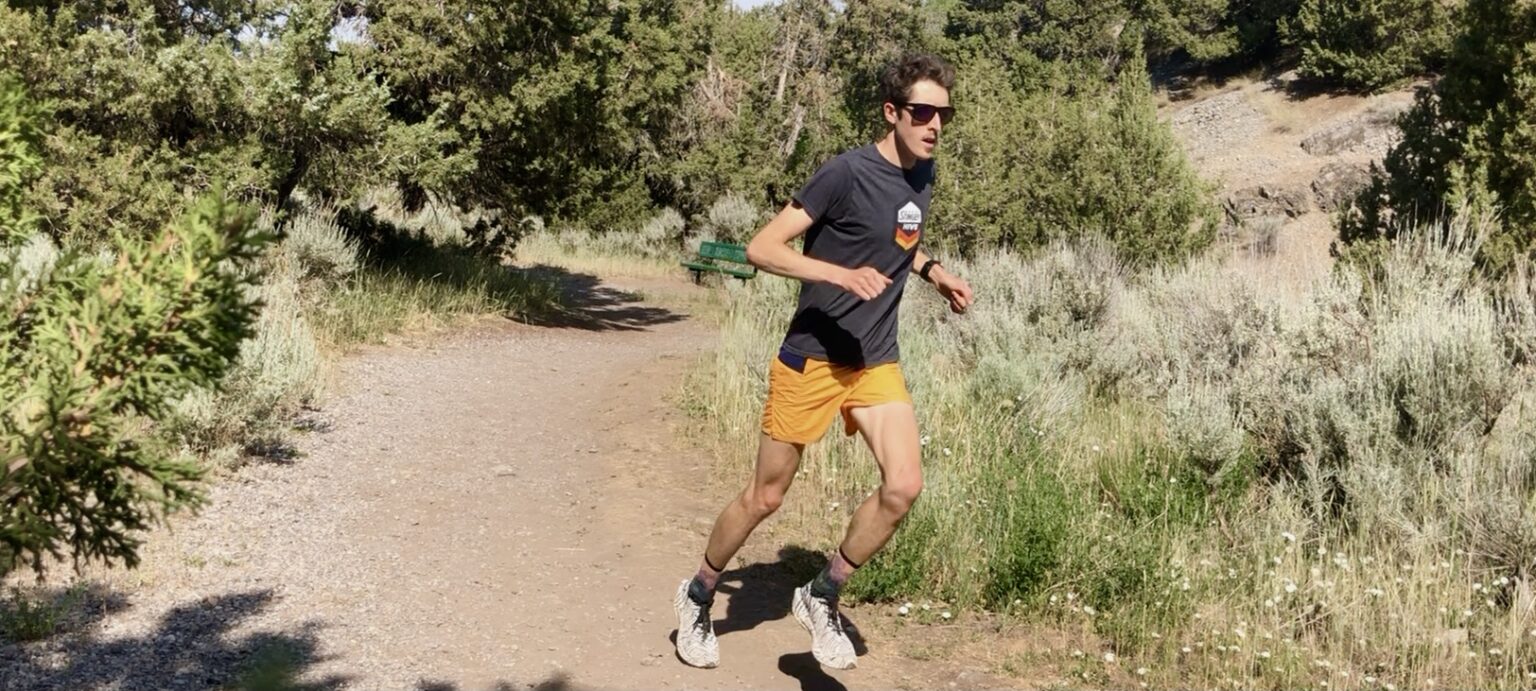
So how does the CTM Ultra Carbon stack up to other carbon-plated, long-distance-oriented shoes? What about more “typical” shoes in this category? And can handle running both on and off road?
After about 80 miles in the CTM Ultra Carbon, I think it’s an awesome shoe in the right circumstances — but it also has its limitations. In this review, I’ll unpack the shoe’s strong points and its not-so-strong points in an effort to help you decide whether or not it’s worth the (significant) investment.
Fit
As always, it’s best to try the CTM Ultra Carbon on in person if possible. I’ll do my best to provide some context on how the shoe fits my fairly narrow, low-volume feet, but your experience with the CTM Ultra Carbon (or any other shoe, for that matter) will depend a whole lot on your personal fit preferences and foot shape.
With all that said, I personally think Craft nailed the CTM Ultra Carbon’s fit. Craft says the CTM Ultra Carbon has an “Anatomic Racing Fit” — which they describe as a secure midfoot and anatomic toe box. That sounds right up my alley on paper, and the fit definitely lived up to my expectations in practice. The tongue is anchored to the midsole with an elastic gusset (kind of like the EndoFit bootie found in most of Salomon’s trail shoes), which hugs the midfoot and helps improve fit security. And as advertised, the toe box is wide enough to provide space for toe-splay. It’s still narrower than a shoe like the Altra Timp, but the CTM Ultra Carbon’s toe box provides way more space than the Hoka One One Carbon X2 or Inov-8 TrailFly Ultra G 300 Max.
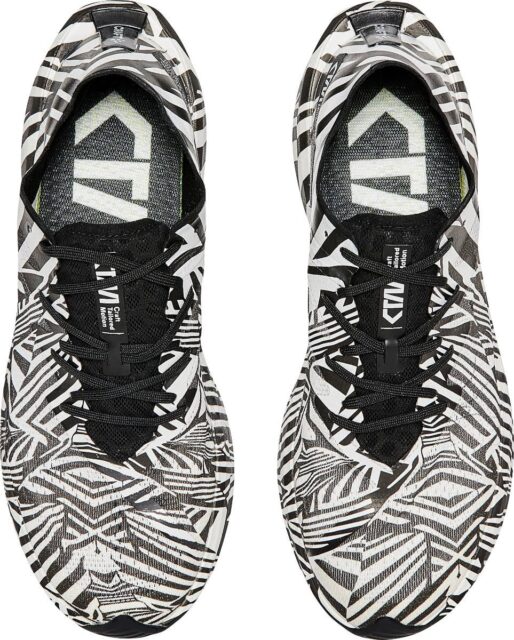
So from an overall last perspective, I’m a big fan of the CTM Ultra Carbon’s fit. The gusseted tongue keeps my midfoot / heel from sliding around inside the shoe, and the toe box provides plenty of space to keep my toes comfortable. My only critique of the CTM Ultra Carbon’s fit is that the entire upper is extremely thin and stretchy (more on that later). That’s great from a comfort perspective, but it definitely makes the shoe feel less secure on uneven terrain. The gusseted tongue keeps my foot in place on even terrain, but the lack of rigid overlays around the lacing system / midfoot means that, as soon as I hit uneven / off-camber terrain, the upper doesn’t have quite enough structure to keep my feet locked down.
Again, this insecurity is really only noticeable on more rugged terrain — which really isn’t what the CTM Ultra Carbon is designed for. On pavement and more even trails, the shoe feels both secure and comfortable. Still, it narrows the CTM Ultra Carbon’s wheelhouse quite a bit, so it’s worth keeping in mind if you typically run on more rugged trails.
Weight
The CTM Ultra Carbon is pretty darn light for a shoe of its size. It’s stated weight of 260 g / 9.2 oz for a US Men’s 8.5 (½ size smaller than most brands report) might not sound super light, but I think it’s pretty impressive for a shoe with a significant 40 mm / 30 mm stack height. For a more direct comparison, here’s how the CTM Ultra Carbon’s weight compares to similar shoes from a few other brands (stated weights are based on a US Men’s 9, unless otherwise noted):
210 g / 7.4 oz — Nike Zoom Alphafly Next%
213 g / 7.5 oz — Saucony Endorphin Pro
238 g / 8.4 oz — Hoka One One Carbon X2
260 g / 9.2 oz — Craft CTM Ultra Carbon (US Men’s 8.5)
264 g / 9.3 oz — Hoka One One Evo Speedgoat
269 g / 9.5 oz — Brooks Catamount
272 g / 9.6 oz — Topo Athletic Zephyr
295 g / 10.4 oz — The North Face Flight Vectiv
Considering that the CTM Ultra Carbon is kind of a hybrid road / trail shoe, its weight makes pretty good sense to me when compared to other road and trail racing shoes. The CTM Ultra Carbon isn’t as light as carbon-plated road-racing shoes like the Hoka Carbon X2 or Saucony Endorphin Pro, but it’s also a bit lighter than trail-racing shoes like the Hoka Evo Speedgoat or The North Face Flight Vective. And as I previously mentioned, you’re getting a whole lot of shoe in that 9.2 oz. Most importantly, the CTM Ultra Carbon feels very light and efficient out on the roads / trails. I attribute that mostly to the shoe’s awesome energy return (more on that later), but its reasonably light weight doesn’t hurt, either.
Upper
The CTM Ultra Carbon has a lightweight, minimal mesh upper. As I mentioned above, the tongue is attached to the midsole with an elastic gusset that hugs the midfoot and keeps the tongue from sliding from side to side at all. The rest of the upper consists of a super lightweight, almost see-through mesh material. Finally, rather than a traditional rigid heel cup, the CTM Ultra Carbon has two air-filled pods on the sides of the heel cup that provide a bit of additional structure / support.
Overall, the CTM Ultra Carbon’s upper does its job well on roads and non-technical trails. It’s light, comfortable, and extremely breathable. The super thin mesh upper allows for plenty of airflow in hot weather — the downside is that it also lets quite a bit of dust into the shoe on dusty trails. Other than that, my only complaint about the CTM Ultra Carbon’s upper comes on more technical terrain.

Midsole
Like most carbon-plated shoes, the CTM Ultra Carbon’s midsole has a lot going on. There are four basic components: a thick layer of Craft’s Vault midsole foam on the bottom, then the full-length carbon fiber plate, then another thinner layer of midsole foam, and finally Craft’s “Ultra Insole.” Like Inov-8’s Boomerang Insoles, Craft’s Ultra Insole is made of the same TPU bead material as some brands’ midsole foams (e.g., adidas Boost foam). The CTM Ultra Carbon’s midsole also has a fairly aggressive rocker shape, which just means that the heel and toe curve up off the ground when viewed from the side.

Overall, the CTM Ultra Carbon’s midsole feels just as I’d expect (and hope) for a shoe with a 40 mm stack height and a carbon fiber plate. The Vault foam is pretty firm, so the CTM Ultra Carbon’s ride doesn’t feel as soft or forgiving as the Hoka Carbon X2. But when paired with the CTM’s carbon fiber plate and extra-springy Ultra Insole, the Vault foam makes for an extremely efficient-feeling ride. If anything, I think the CTM Ultra Carbon provides even better energy return than the Hoka Carbon X2. I was also pleasantly surprised by how unnoticeable the CTM Ultra Carbon’s 10 mm drop was. I usually prefer shoes that are closer to the 4-6 mm drop range, so I was a little concerned that the CTM Ultra Carbon’s higher drop would throw off my stride a bit. Fortunately, the CTM’s rockered midsole geometry makes the shoe feel totally fine for my normal forefoot-strike — and my guess is that the higher drop would make the shoe feel good for midfoot or heel-strikers as well.
Outsole
The CTM Ultra Carbon’s outsole falls somewhere in between a typical road shoe outsole and a true trail shoe outsole. Craft says that the CTM’s “Ultra Trac” outsole can handle roads or light trails in varying conditions — and that seems to be pretty accurate based on my experience so far.
The CTM Ultra Carbon has fairly shallow chevron-shaped lugs in the forefoot and heel, with exposed midsole foam under the midfoot. As advertised, these lugs provide plenty of traction on roads and hard-packed trails — but that’s pretty much it.
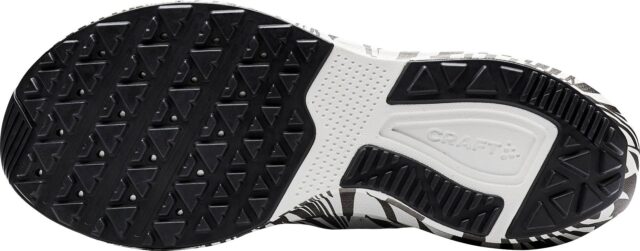
On Trail
I’ve worn the CTM Ultra Carbon on everything from short, easy recovery runs to longer workouts on both roads and light trails. After my first 80 miles in the shoe, I think it’s a pretty ideal shoe for long, fast runs on roads and non-technical trails.
The shoe’s overall feel reminds me most of the Hoka Carbon X2 — which isn’t too surprising since the CTM and the X2 are the only carbon-plated shoes I’ve tried so far. But in my opinion, the CTM Ultra Carbon provides a slightly faster, more energetic ride and a more comfortable fit than the Hoka Carbon X2. The CTM Ultra Carbon has a notably roomier toe box than the X2, and the CTM’s firmer Vault midsole foam feels like it provides better energy return than the slightly softer PROFLY midsole on the X2. The CTM Ultra Carbon also handles gravel roads and non-technical trails much better than the X2, thanks to its road-trail hybrid outsole.
With all that in mind, the CTM Ultra Carbon would definitely be my go-to shoe for a long race or workout on mixed roads and non-technical trails. Its carbon plate and rockered midsole give the shoe a noticeably more energetic ride than non-carbon-plated trail-racing shoes like the Hoka Evo Speedgoat, and I haven’t had any issues with blisters or other discomforts on runs up to 2 hours long. So in that respect, I think Craft isn’t too far out of bounds when they say that the CTM Ultra Carbon sets a “new standard” for ultra-distance running.
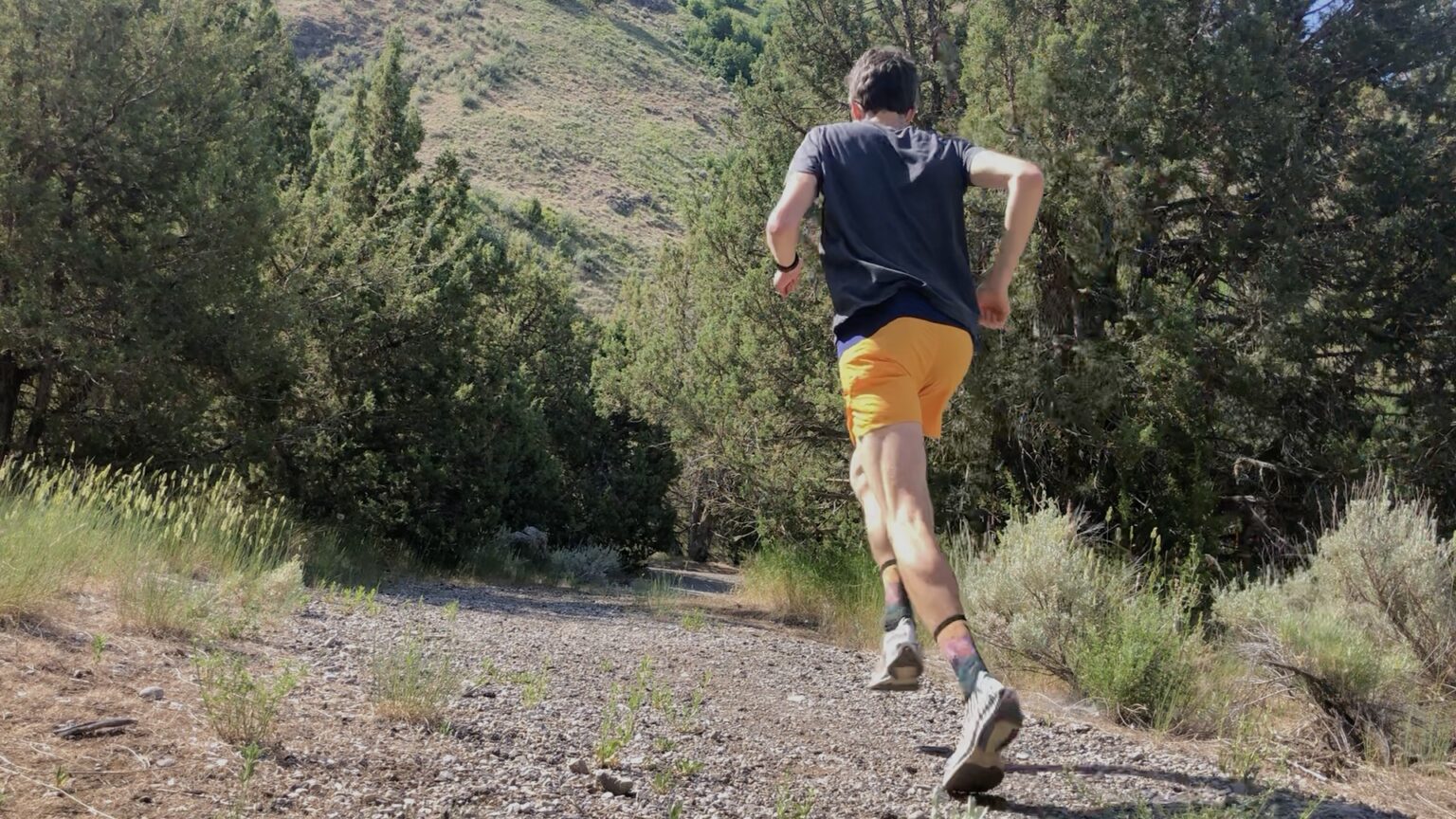
But as with every shoe I’ve used, the CTM Ultra Carbon isn’t perfect. As I’ve mentioned throughout the review, the CTM Ultra Carbon only works really well on a fairly limited type of terrain. The combination of the slightly insecure upper and fairly minimal traction keep me from picking the CTM Ultra Carbon for anything remotely technical. On the flip side, if I was looking for a pure road shoe, I’d probably still pick the Hoka Carbon X2 (or a lighter carbon-plated shoe like the Saucony Endorphin Pro) over the CTM Ultra Carbon since they’re a bit lighter and I wouldn’t need the CTM’s extra grip. So at least for my preferences, I’d really only pick the CTM Ultra Carbon over other shoes for runs on dirt roads and super mellow, non-technical trails without any steep climbs / descents. And while it does perform very well in those settings, that fairly limited range does make it a bit harder to digest the shoe’s $250 price tag. Still, I’ll almost certainly reach for the CTM Ultra Carbon next time I do a race on dirt roads and / or non-technical trails.
Durability
So far the CTM Ultra Carbon is holding up just fine, but I’m always extra-curious about long-term durability for any shoe with a super lightweight, minimal upper. Obviously, this is all just speculation at this point since I only have 80 miles on the CTM Ultra Carbon so far, but its super thin mesh upper definitely seems like it could be less durable than most shoes. It’s holding up so far, but I’ll definitely provide an update if I run into any issues down the road. Aside from that, the midsole and outsole seem to be holding up well — there is some noticeable wear on the outsole, but no more than I’d expect after 80 miles of use.

Who’s It For?
I think the CTM Ultra Carbon is a great race and speed workout shoe for runners who spend a lot of time on non-technical, unpaved surfaces. I wouldn’t recommend the CTM for anything technical or steep, but it performs very well on smooth dirt and pavement (notably better than most similarly light, cushioned, efficient shoes). I’ve mostly used the CTM Ultra Carbon for faster-paced runs to make it last longer (rather than as a daily driver), but it’s plenty comfortable enough to be an everyday trainer too — albeit an extremely expensive one.
Bottom Line
At the end of the day, I think Craft is right in saying that the CTM Ultra Carbon is a “premium running shoe for athletes who demand nothing but the best.” In my opinion, it is a pretty niche shoe — in this crowded category, it really only stands out on non-technical trails and dirt roads — but within that niche, it performs way better than any other shoe I’ve tried. So if a $250 shoe is in the budget and you do spend a lot of time on non-technical, unpaved surfaces, I think the CTM Ultra Carbon is definitely worth a look.


